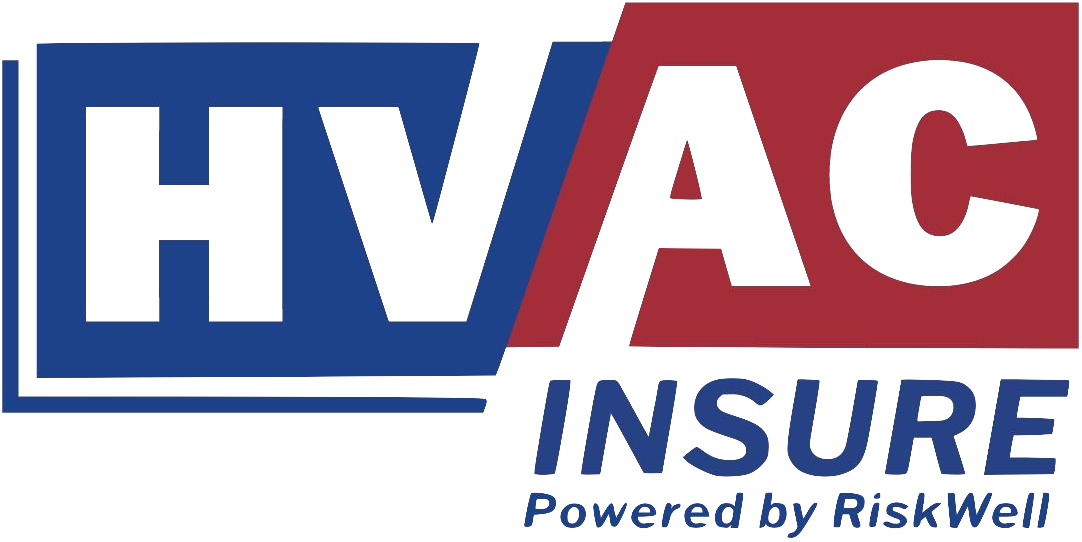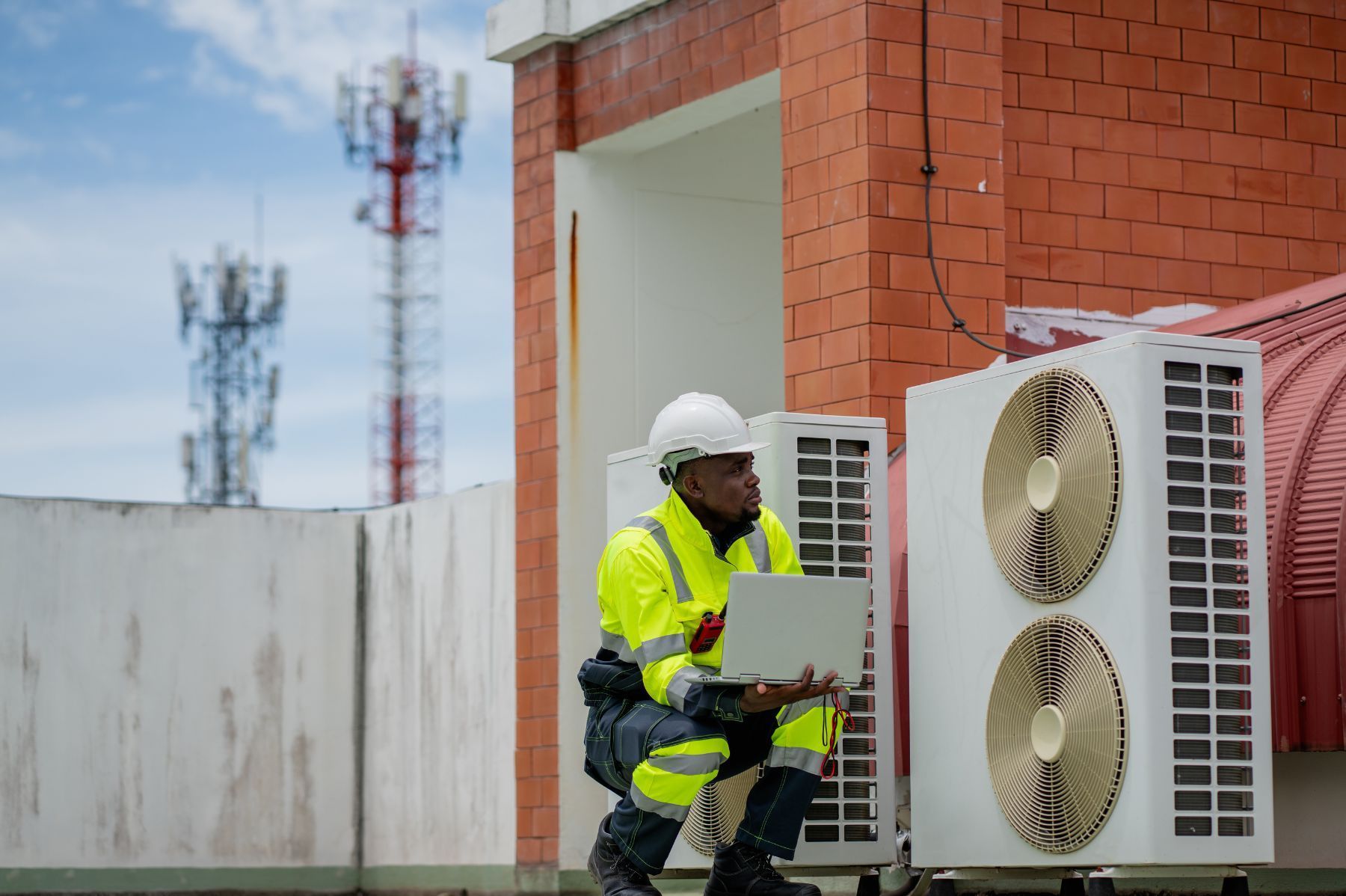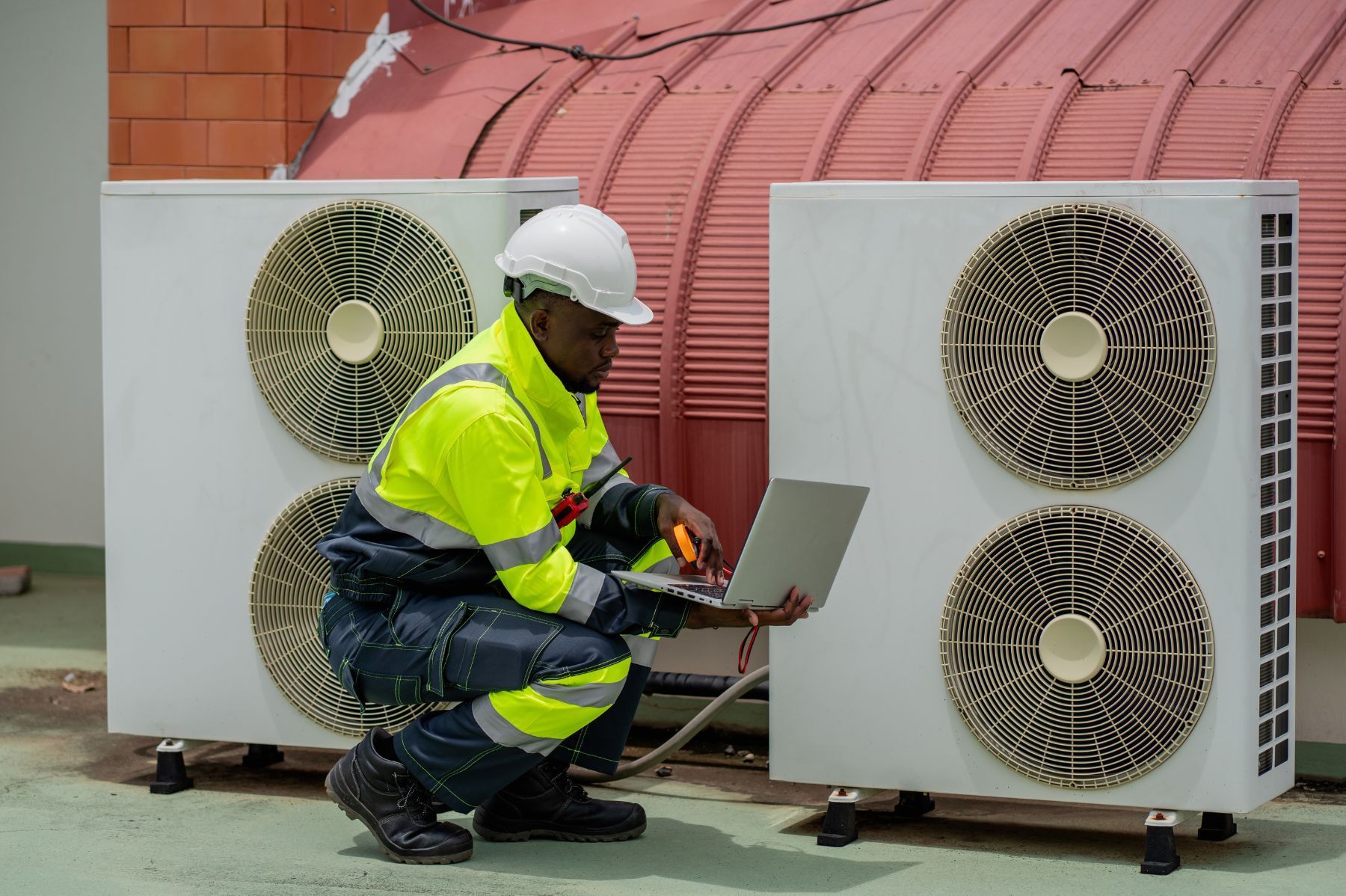The Risks of Subcontractor Mismanagement for HVAC Firms
See How We're Different
or call us: (469) 678-8001

When HVAC firms rely on subcontractors, the stakes are high. A single misstep in managing these partnerships can ripple through projects, damaging reputations, inflating costs, and even threatening the survival of the business. Subcontractor mismanagement is more than just an operational headache-it’s a critical risk that every HVAC company must understand and control.
Recent industry insights highlight how communication failures and operational inefficiencies often stem from subcontractor issues. For example, Jonathan Taub, President of FIELDBOSS, points out that “the real battleground is the customer's cell phone,” emphasizing that clear communication, such as simple text confirmations, can outweigh even financial incentives in customer satisfaction. This shows how subcontractor coordination directly impacts client experience and business outcomes. Taub’s insight underscores the importance of managing subcontractors effectively to maintain strong customer relationships.
Operational Risks Linked to Subcontractor Oversight
Subcontractors often handle critical parts of HVAC projects, from installation to maintenance. When their work is not properly supervised, the risk of errors and inefficiencies rises sharply. A striking example comes from a study reviewing 104 field demonstrations of HVAC systems, which found that 71% used protocols that could misrepresent actual system efficiency. This suggests that subcontractors might be following outdated or incorrect procedures, leading to inaccurate performance claims and dissatisfied clients. Research by Khabbazi et al. highlights how such misrepresentations can erode trust and cause costly rework.
Beyond technical errors, subcontractor mismanagement can cause delays and disrupt project timelines. Without clear scheduling and accountability, HVAC firms risk missing deadlines, which can cascade into lost business and strained client relationships. Given that nearly 20% of HVAC and refrigeration systems assessed were found non-damaged at the time of evaluation, according to the HVACi 2023 Annual Claims Report, it’s clear that some claims and project issues stem from operational misunderstandings rather than equipment failure. This points to the need for better oversight of subcontractor work to prevent unnecessary disputes and claims.
Quality Control Challenges
Ensuring quality is a constant challenge when subcontractors are involved. HVAC firms must implement rigorous inspection and verification processes to catch mistakes early. Without this, poor workmanship can go unnoticed until after project completion, leading to warranty claims and reputational damage. The high failure rate of HVAC businesses—20% industry-wide and 70% within the first year—reported by the Service Roundtable—can often be traced back to operational gaps, including subcontractor issues. Furthermore, the lack of standardized training for subcontractors can exacerbate these quality control challenges. Each subcontractor may have different levels of expertise and familiarity with the latest technologies and practices, leading to inconsistent results across projects. This inconsistency not only affects the immediate project but can also tarnish the long-term reputation of the HVAC firm, making it imperative to establish a robust training and onboarding program for all subcontractors involved.
Moreover, the integration of technology in monitoring subcontractor performance is becoming increasingly vital. Utilizing project management software and real-time tracking tools can help HVAC firms maintain oversight and ensure that subcontractors adhere to established protocols. By leveraging data analytics, firms can identify patterns of inefficiency or recurring issues, allowing them to address problems proactively rather than reactively. This approach not only enhances quality control but also fosters a culture of accountability among subcontractors, as they are aware that their work is being monitored closely. In an industry where customer satisfaction hinges on reliability and performance, investing in these technological solutions can be a game changer for HVAC companies looking to mitigate operational risks associated with subcontractor oversight.
Financial Implications of Subcontractor Mismanagement
Financial risks tied to subcontractor mismanagement are significant. When subcontractors underperform or cause delays, costs can spiral quickly. Rework, warranty claims, and lost contracts all chip away at profit margins. Additionally, poor subcontractor management can increase insurance claims, driving up premiums and reducing coverage options. The financial strain can extend beyond immediate project costs, affecting long-term profitability and the overall viability of the business. Companies may find themselves in a cycle of reactive spending, where they continually allocate resources to address issues stemming from mismanaged subcontractors rather than investing in growth and innovation.
One hidden cost is the impact on workforce stability. The HVAC industry faces an average annual turnover rate of around 20%, according to ZIPDO Education Reports 2025. High turnover complicates recruitment and training, especially when subcontractors are involved. If subcontractors are not properly integrated or trained, they may contribute to workforce instability, further raising operational costs. Moreover, the loss of skilled workers can lead to a decline in service quality, which can tarnish a company's reputation and lead to customer attrition. This cyclical problem can create a challenging environment for businesses trying to maintain competitive advantage in a crowded market.
Training and Compliance Costs
Emerging refrigerants like R-1234yf require specialized knowledge, and over half of HVAC companies report a need for targeted training in these areas. Subcontractors lacking this expertise can cause compliance issues and safety risks. Investing in training programs for subcontractors is essential but adds to operational expenses. Without it, firms risk regulatory penalties and damage to their reputation. Furthermore, the costs associated with non-compliance can escalate quickly, leading to fines and legal challenges that divert resources away from core business activities. As regulations evolve, staying ahead of compliance requirements becomes not just a matter of legal obligation but a strategic advantage that can differentiate a company in a competitive landscape.
In addition to compliance, the quality of training can directly influence the effectiveness of subcontractors on the job. A well-trained subcontractor is more likely to adhere to safety standards, utilize materials correctly, and complete tasks efficiently, ultimately leading to reduced waste and lower costs. Conversely, inadequate training can result in mistakes that necessitate costly corrections, further straining budgets. Companies must also consider the long-term benefits of investing in subcontractor training, as a knowledgeable workforce can lead to higher customer satisfaction and repeat business, creating a more stable revenue stream over time.
Legal and Liability Risks
Subcontractor mismanagement can expose HVAC firms to serious legal liabilities. Poorly managed subcontractors may violate safety protocols or building codes, leading to accidents or failed inspections. This can result in lawsuits, fines, and costly remediation efforts. The repercussions of such incidents extend beyond immediate financial burdens; they can also tarnish a company's reputation, making it difficult to secure future contracts or partnerships. Clients often seek assurance that their projects are in capable hands, and any misstep can lead to a loss of trust that may take years to rebuild.
Insurance claims related to subcontractor work are a common pain point. The HVACi 2023 Annual Claims Report notes that nearly 20% of systems assessed were non-damaged, implying that some claims arise from miscommunication or operational errors rather than actual equipment failure. This highlights how subcontractor mistakes can trigger unnecessary insurance claims, complicating risk management. Furthermore, repeated claims can lead to higher premiums and stricter underwriting requirements, which can further strain the financial health of HVAC firms already grappling with the complexities of subcontractor management.
Contractual Clarity and Risk Allocation
Clear contracts are vital to define responsibilities and limit liability. HVAC firms should ensure subcontractor agreements specify quality standards, deadlines, and compliance requirements. Without this clarity, disputes are more likely, and firms may bear the brunt of subcontractor failures. It is also essential to include clauses that address potential delays and outline the consequences of non-compliance, as this can provide a framework for accountability. Additionally, incorporating a dispute resolution process within contracts can facilitate quicker resolutions, reducing the likelihood of costly legal battles and preserving business relationships.
Moreover, the importance of regular communication cannot be overstated. Establishing a routine for status updates and performance evaluations can help identify issues before they escalate into significant problems. By fostering an environment of transparency and collaboration, HVAC firms can not only enhance the performance of their subcontractors but also mitigate risks associated with mismanagement. Training sessions and workshops can further align subcontractor practices with the firm’s standards, ensuring that everyone involved is on the same page and committed to maintaining high-quality work.
Communication Breakdown: The Hidden Risk
Communication issues often underlie subcontractor mismanagement. HVAC businesses frequently struggle to keep clients informed and coordinate subcontractor schedules effectively. Jonathan Taub’s observation that “a simple text message confirming the technician is on their way is more powerful than a 10% discount” reveals how crucial timely communication is for customer satisfaction. Firms that fail to manage subcontractor communication risk losing client trust and repeat business. This insight is a reminder that managing subcontractors includes managing how they interact with customers.
Internal communication is just as important. Subcontractors need clear instructions and feedback loops to perform well. Without solid communication channels, mistakes multiply, and inefficiencies grow. For instance, if a subcontractor is unaware of a last-minute change in project specifications, it can lead to costly delays and rework. Regular check-ins and updates can help mitigate these risks, ensuring that everyone is on the same page. Implementing project management software can also streamline communication, allowing for real-time updates and documentation that all team members can access.
Moreover, fostering a culture of open communication can significantly enhance team dynamics. When subcontractors feel comfortable voicing concerns or asking questions, it creates an environment where issues can be addressed promptly. This proactive approach not only improves the quality of work but also strengthens relationships among team members. Training sessions focused on communication skills can further empower subcontractors, equipping them with the tools needed to engage effectively with both clients and colleagues. Ultimately, prioritizing communication within the HVAC industry can lead to smoother operations and a more satisfied customer base.
Industry Trends Affecting Subcontractor Management
The HVAC industry is undergoing consolidation, with mergers and acquisitions rising by 6.9% year-over-year. So far this year, 124 deals have been announced or completed, according to Capstone Partners. This trend reshapes competitive dynamics and often leads to larger firms relying more heavily on subcontractors to scale quickly. As companies merge, they not only combine resources but also diversify their service offerings, which can create a more complex subcontractor landscape. Larger firms may seek specialized subcontractors to fill gaps in expertise, leading to an increased demand for niche skills within the HVAC sector.
While growth through acquisition can bring new resources, it also complicates subcontractor management. Integrating different subcontractor pools and standardizing processes across merged entities require careful planning. Failure to do so can amplify risks rather than reduce them. Furthermore, the challenge lies in aligning the corporate cultures of the merging companies, which can affect how subcontractors are managed and evaluated. Disparate systems for quality control and compliance can lead to inconsistencies that jeopardize project timelines and budgets.
Workforce Challenges Amplify Risks
Many HVAC contractors express concern about workforce shortages and training gaps. One HVACR contractor bluntly stated, “Without good help and people willing to learn, my company and the whole industry is in trouble.” This sentiment, reported by ACHR News, highlights how subcontractor quality depends heavily on the availability of skilled labor and ongoing education. The aging workforce in the HVAC industry further exacerbates this issue, as many seasoned professionals are retiring without a sufficient number of younger workers entering the field to take their place. This generational shift not only affects the labor pool but also impacts the transfer of knowledge and best practices that are essential for maintaining high standards.
Recruitment and retention challenges mean subcontractors may be less experienced or less committed, increasing the risk of errors. HVAC firms must invest in building strong subcontractor relationships and offering training opportunities to mitigate these risks. Additionally, implementing mentorship programs can help bridge the skill gap by pairing experienced workers with novices, fostering a culture of learning and collaboration. As technology continues to evolve, staying ahead of training in new HVAC systems and tools will be crucial for both contractors and subcontractors, ensuring that they remain competitive in a rapidly changing market.
Strategies to Mitigate Subcontractor Mismanagement Risks
Effective subcontractor management requires a proactive approach. Here are key strategies HVAC firms can adopt:
- Rigorous Vetting: Thoroughly evaluate subcontractors’ qualifications, past performance, and compliance history before hiring.
- Clear Contracts: Define expectations, deliverables, timelines, and liability clauses explicitly.
- Regular Training: Provide ongoing education, especially on emerging technologies and refrigerants.
- Communication Protocols: Establish clear channels for both internal coordination and customer updates.
- Quality Assurance: Implement frequent inspections and audits to catch issues early.
- Technology Integration: Use project management and communication tools to streamline scheduling and reporting.
These steps not only reduce risks but also enhance operational efficiency and customer satisfaction.
Before You Go: What Every HVAC Firm Should Remember
Subcontractor mismanagement is a hidden threat that can undermine even the most well-established HVAC companies. The financial, operational, legal, and reputational risks are real and substantial. Yet, with deliberate strategies and attention to detail, these risks can be controlled.
By prioritizing clear communication, investing in training, and enforcing strict quality controls, HVAC firms can turn subcontractors from a liability into a competitive advantage. Staying informed about industry trends, such as the rise in mergers and acquisitions and workforce challenges, helps firms adapt their subcontractor management practices to the evolving market.
Understanding these risks and acting on them is essential for long-term success in the HVAC industry.
Frequently Asked Questions
Q: Why is subcontractor management so critical in HVAC projects?
A: Subcontractors handle key tasks like installation and maintenance. Poor management can lead to errors, delays, and unhappy customers, impacting the entire project.
Q: How can poor subcontractor communication affect customers?
A: Customers value timely updates. Simple messages confirming technician arrival can boost satisfaction more than discounts, so miscommunication can harm client trust.
Q: What are common legal risks from subcontractor mismanagement?
A: Violations of safety codes, accidents, and failed inspections can lead to lawsuits, fines, and insurance claims against the HVAC firm.
Q: How does workforce turnover impact subcontractor risks?
A: High turnover rates make it harder to maintain skilled teams. Subcontractors may lack experience or training, increasing the chance of mistakes.
Q: What steps can HVAC firms take to reduce subcontractor risks?
A: Vet subcontractors carefully, use clear contracts, provide training, maintain open communication, and enforce quality checks regularly.
Q: Are mergers and acquisitions affecting subcontractor management?
A: Yes. Industry consolidation increases reliance on subcontractors and requires firms to standardize processes across different teams to avoid risks.











